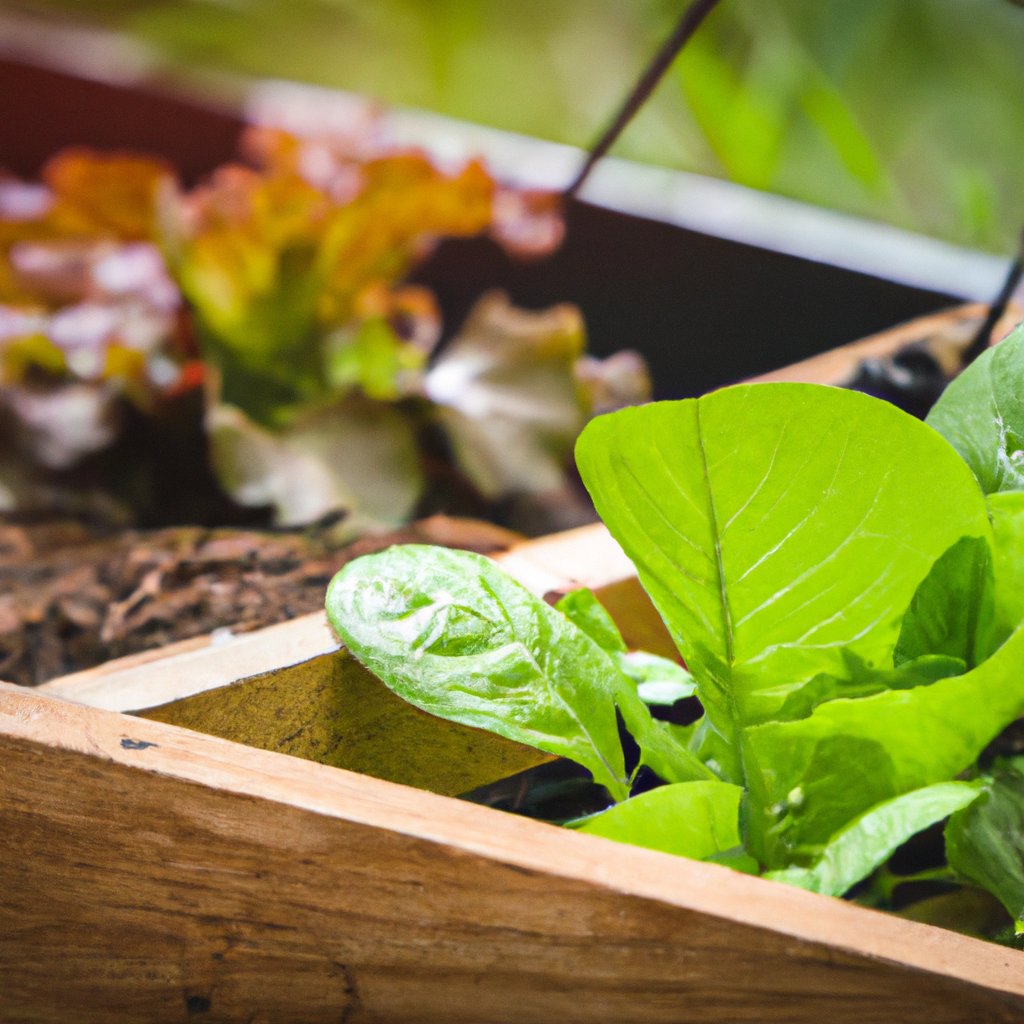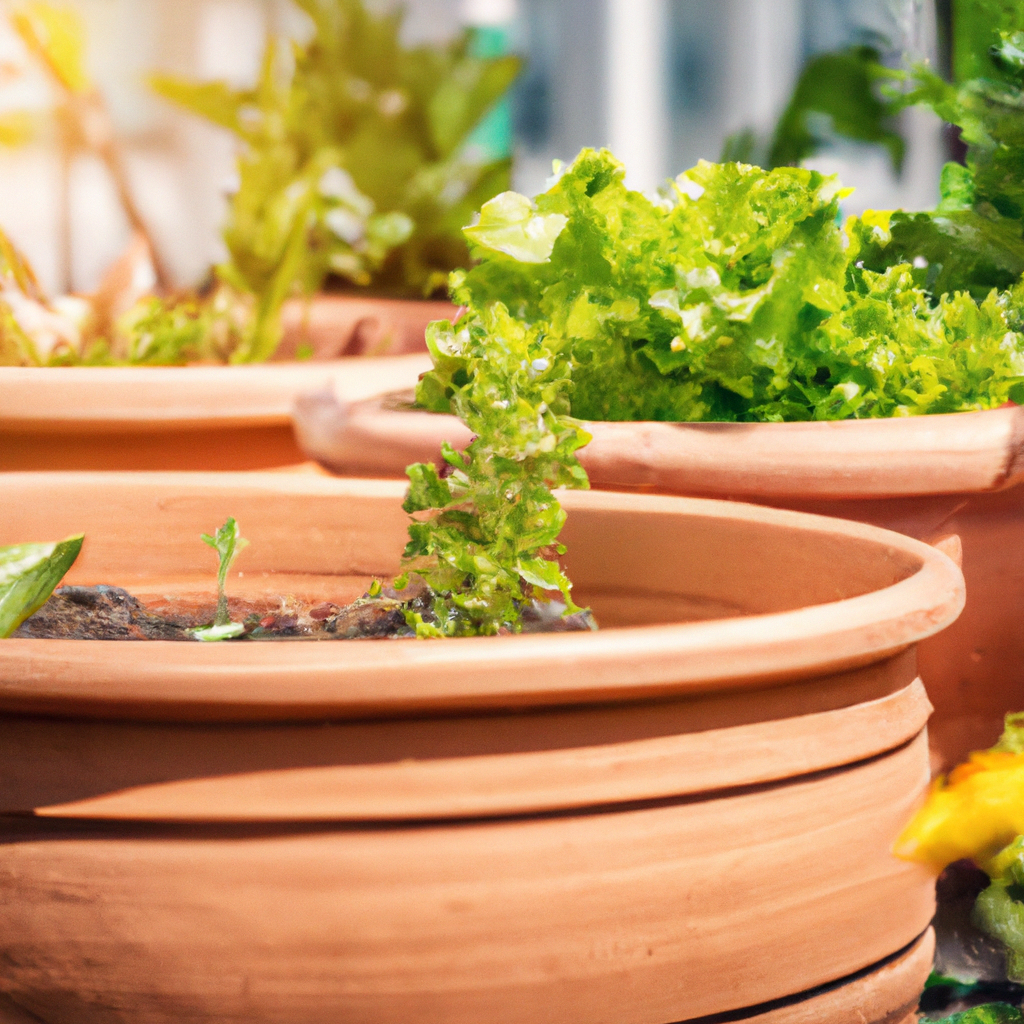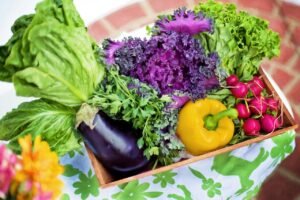
Whether you’re a beginner or an experienced gardener, choosing the ideal crops for your small urban garden is a key decision that will determine the success of your green oasis. With limited space and resources, it’s important to select plants that are not only suitable for urban environments but also your personal preferences and needs. From leafy greens and herbs to compact fruiting plants, this article will guide you through the process of selecting the perfect crops that will thrive in your urban garden, adding both beauty and flavor to your daily life. So roll up your sleeves and let’s embark on an exciting journey of urban gardening!
Understanding Your Garden Space
Assessing the available space
When choosing crops for your small urban garden, it’s essential to assess the available space you have. Measure the exact dimensions of your garden and take note of any potential obstacles such as fences, walls, or structures. Understanding the size of your garden will help you determine the amount of planting space you have and enable you to plan accordingly.
Determining the amount of sunlight
Next, consider the amount of sunlight that your garden receives throughout the day. Observe which areas get direct sunlight, partial shade, or full shade. Different crops have varying sunlight requirements, so it’s crucial to select plants that are well-suited to the available light conditions in your garden space.
Evaluating soil quality
Assessing the quality of your garden’s soil is vital for successful crop cultivation. Consider factors such as soil composition, drainage, and fertility. Test your soil pH to ensure it is suitable for the crops you intend to grow. If necessary, you can improve soil quality by adding organic matter, such as compost or well-rotted manure, to enhance fertility and structure.
Considering Climate and Growing Conditions
Researching climate requirements
Before selecting crops for your small urban garden, research the climate requirements of each plant. Consider the average temperature range, humidity levels, and rainfall patterns in your region. Some crops thrive in cooler climates, while others require warmer conditions. By understanding the climate requirements, you can choose crops that are well-suited to your specific area.
Identifying microclimates in your garden
Microclimates are small areas within your garden that have slightly different growing conditions than the overall climate of your region. Observe if any parts of your garden have unique microclimates, such as areas that receive greater or lesser wind exposure, heat absorption from nearby structures, or increased moisture from drainage. Identifying these microclimates will allow you to select crops that thrive in those specific conditions.
Taking into account the temperature variations
Consider the temperature variations throughout the year in your garden. Some crops are sensitive to frost and cannot withstand cold temperatures, while others thrive in cooler conditions. Take note of the average first and last frost dates in your region to ensure you choose crops that can tolerate these temperature fluctuations. This will help you maximize your yield and ensure successful crop growth.

Determining Your Planting Goals
Deciding on the purpose of your garden
Before selecting crops, consider the purpose of your garden. Are you growing vegetables for personal consumption, or are you aiming to create a visually appealing garden with colorful flowers? Understanding your goals will help you prioritize certain crops over others and align your planting choices accordingly.
Considering the time commitment
Evaluate the amount of time you can dedicate to gardening. Some crops require more attention, care, and maintenance than others. Consider your schedule and choose crops that suit your available time commitment. If you have limited time, opt for low-maintenance crops or those that are less demanding in terms of care.
Setting realistic yield expectations
When choosing crops, set realistic expectations for your desired yield. Different plants have varying growth rates and yield potentials. Consider the size and limitations of your garden space and select crops that will produce a reasonable harvest considering these factors. It’s better to have realistic expectations and be pleasantly surprised than to be disappointed with an overly ambitious yield goal.
Selecting Crops Based on Space Efficiency
Choosing compact and vertical plants
In a small urban garden, space efficiency is crucial. Look for crops that have a compact growth habit or can be trained to grow vertically. Compact plants such as cherry tomatoes, bush beans, or baby spinach take up less space and are well-suited for small gardens. Additionally, vining plants like cucumbers or pole beans can be trained to grow up trellises or fences, utilizing vertical space effectively.
Opting for container-friendly crops
If you have limited ground space, consider growing crops in containers. Many vegetables and herbs can thrive in pots, window boxes, or hanging baskets. Look for container-friendly varieties of tomatoes, peppers, lettuces, and herbs. Ensure that the containers have proper drainage and are large enough to accommodate the root system of the chosen crops.
Utilizing intercropping and companion planting
Intercropping and companion planting are techniques that maximize space utilization and enhance crop health. Intercropping involves planting different crops together in the same area, allowing them to complement each other and utilize space more efficiently. Companion planting involves growing crops that have mutually beneficial relationships, such as planting basil near tomatoes to repel pests. By utilizing these techniques, you can make the most of your small garden space.

Prioritizing High Yield and Fast-growing Crops
Identifying crops with short growth cycles
To maximize your yield in a small urban garden, consider crops with short growth cycles. These crops reach maturity and produce harvestable fruits or vegetables quickly, allowing for multiple planting cycles throughout the growing season. Examples of fast-growing crops include radishes, salad greens, and baby carrots.
Considering crops with multiple harvests
Choosing crops that offer multiple harvests is an excellent way to maximize yield and make the most of your garden space. Look for varieties that produce continuously, such as indeterminate tomatoes or perpetual spinach. These crops will keep providing fresh produce throughout the season, ensuring a bountiful harvest from limited space.
Selecting high-yield varieties
When choosing crops for your small urban garden, opt for high-yield varieties. These varieties are bred to produce a greater quantity of fruits or vegetables per plant, allowing you to maximize your harvest from limited space. Look for varieties labeled as high-yield or productive, and consider heirloom varieties known for their abundant yields.
Assessing Conventional vs. Organic Methods
Understanding the differences between conventional and organic gardening
Before deciding on the use of pesticides and fertilizers, it’s essential to understand the differences between conventional and organic gardening. Conventional gardening typically involves the use of synthetic fertilizers and pesticides, while organic gardening relies on natural or organic alternatives. Consider your values, environmental concerns, and personal preferences when choosing between conventional and organic methods.
Deciding on pesticide and fertilizer usage
Based on your gardening philosophy and the specific needs of your crops, decide whether you will use pesticides and fertilizers. If you choose to use them, research safe and effective options suitable for small-scale urban gardening. Alternatively, explore organic pest and disease control methods, such as biological controls, companion planting, or homemade organic fertilizers.
Exploring natural pest and disease control methods
To maintain a healthy garden, consider natural pest and disease control methods. Integrated Pest Management (IPM) involves a combination of preventive measures and targeted interventions to manage pests effectively. This approach minimizes reliance on pesticides while promoting natural pest control, such as attracting beneficial insects or implementing physical barriers. Additionally, regular monitoring, proper sanitation, and crop rotation can help prevent and control common diseases in your garden.

Considering Seasonal Versatility
Researching crops suitable for multiple seasons
To ensure year-round productivity, research crops that can thrive in multiple seasons. Some vegetables, such as lettuce, spinach, or radishes, tolerate cool temperatures and can be grown in both spring and fall. Other crops, like cherry tomatoes or peppers, excel in warmer weather and can be cultivated during the summer months. By selecting crops with seasonal versatility, you can make the most of your small urban garden throughout the year.
Exploring cultivars with extended harvest periods
Certain cultivars are specifically bred to have extended harvest periods. These varieties continue to produce fruits or vegetables over an extended period, allowing for a more continuous harvest. Look for cultivar descriptions that mention prolonged harvest periods and select these varieties to maximize your yield and enjoy fresh produce for an extended duration.
Planning crop rotation for continuous production
Crop rotation is a technique that involves changing the location of crops each season to minimize pest and disease problems, improve soil fertility, and ensure continuous production. Plan your garden layout to incorporate crop rotation, ensuring that plants from the same family are not grown in the same area consecutively. This practice can help maintain healthy soil and maximize the productivity of your small urban garden.
Evaluating Water and Resource Requirements
Assessing the water availability and irrigation methods
Consider the availability of water in your urban garden and evaluate the most suitable irrigation methods. Determine if you have access to a water source, such as a hose or rainwater collection system. Assess the garden’s soil drainage and choose appropriate irrigation techniques, such as drip irrigation, which conserves water and delivers moisture directly to the plant roots. Ensure you can meet the water needs of your chosen crops within your available resources.
Understanding the nutrient requirements of different crops
Different crops have varying nutrient requirements. Assess the nutrient needs of the crops you intend to grow and determine if your soil can provide sufficient nutrients for their optimal growth. Soil tests can help you understand the existing nutrient levels and identify any deficiencies. Supplement the soil’s fertility, if needed, by incorporating organic fertilizers or compost to ensure your crops receive the necessary nutrients throughout their growth cycle.
Determining the need for additional resources
Consider if you require additional resources, such as trellises, stakes, or mulch, to support the growth of your crops. Some plants, like tomatoes or climbing beans, may need structures to grow vertically, maximizing space utilization. Mulching can help conserve moisture, suppress weeds, and improve soil fertility. Assess your gardening needs and determine if any additional resources are necessary to enhance the productivity of your small urban garden.

Accounting for Pests and Disease
Identifying common pests in urban gardens
Urban gardens may face unique pest challenges due to proximity to buildings, waste areas, or neighboring gardens. Research common pests in your area and assess their potential impact on your selected crops. Common pests in urban gardens include aphids, slugs, snails, and certain caterpillars. Understanding the potential pests will allow you to implement preventive measures and address any infestations promptly.
Researching crop susceptibility to diseases
Different crops have varying susceptibility to diseases. Some plants, like tomatoes or cucumbers, are prone to fungal infections, while others, like leafy greens, may be susceptible to bacterial diseases. Research the specific diseases that commonly affect the crops you wish to grow and select disease-resistant varieties when available. Proper sanitation practices, such as removing diseased plant material, can also help prevent the spread of diseases in your garden.
Implementing preventive measures and maintaining plant health
To minimize the risk of pests and diseases, implement preventive measures and maintain plant health. Regularly inspect your garden for signs of pests or diseases, and promptly address any issues. Providing proper cultural care, such as adequate watering, balanced nutrition, and suitable spacing between plants, can help maintain plant health and reduce the likelihood of pests or diseases affecting your crops.
Considering Personal Preference and Culinary Usage
Choosing crops that align with personal preferences
When selecting crops for your small urban garden, consider your personal preferences. What vegetables or herbs do you enjoy eating or cooking with the most? By growing crops that align with your tastes, you’ll not only enjoy the fruits of your labor but also be motivated to tend to your garden regularly.
Considering culinary versatility and usage
Think about the culinary versatility of the crops you choose. Some vegetables, such as tomatoes or peppers, can be used in various dishes, while others, like herbs, can enhance the flavors of different cuisines. Consider how you plan to use your harvest and select crops that will add flavor and freshness to your favorite recipes.
Exploring unique and heirloom varieties
If you want to add a touch of uniqueness to your small urban garden, explore unique and heirloom varieties. These crops often boast exceptional flavors, vibrant colors, or historical significance. They can add visual interest and unique culinary experiences to your garden, making it a truly special and personalized space.
Choosing the right crops for your small urban garden requires careful consideration of various factors such as space availability, sunlight exposure, soil quality, climate, and personal preferences. By evaluating these aspects, you can make informed decisions and create a thriving garden that yields a bountiful harvest while bringing delight to your urban space. Happy gardening!






